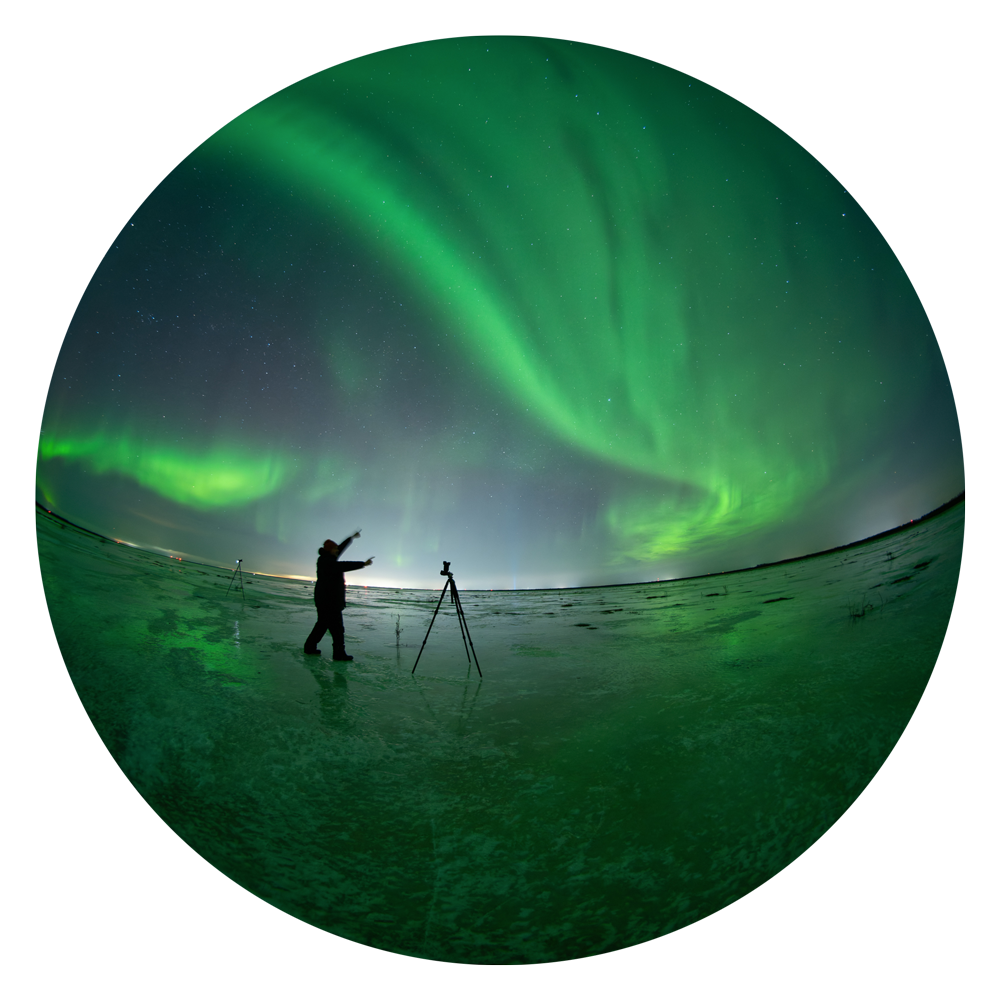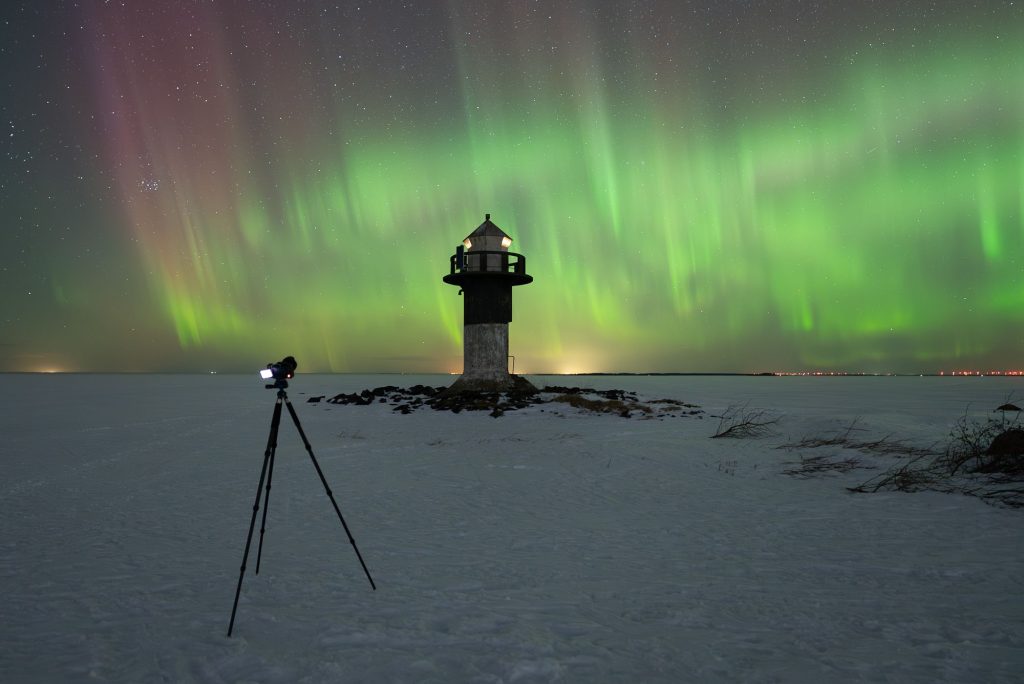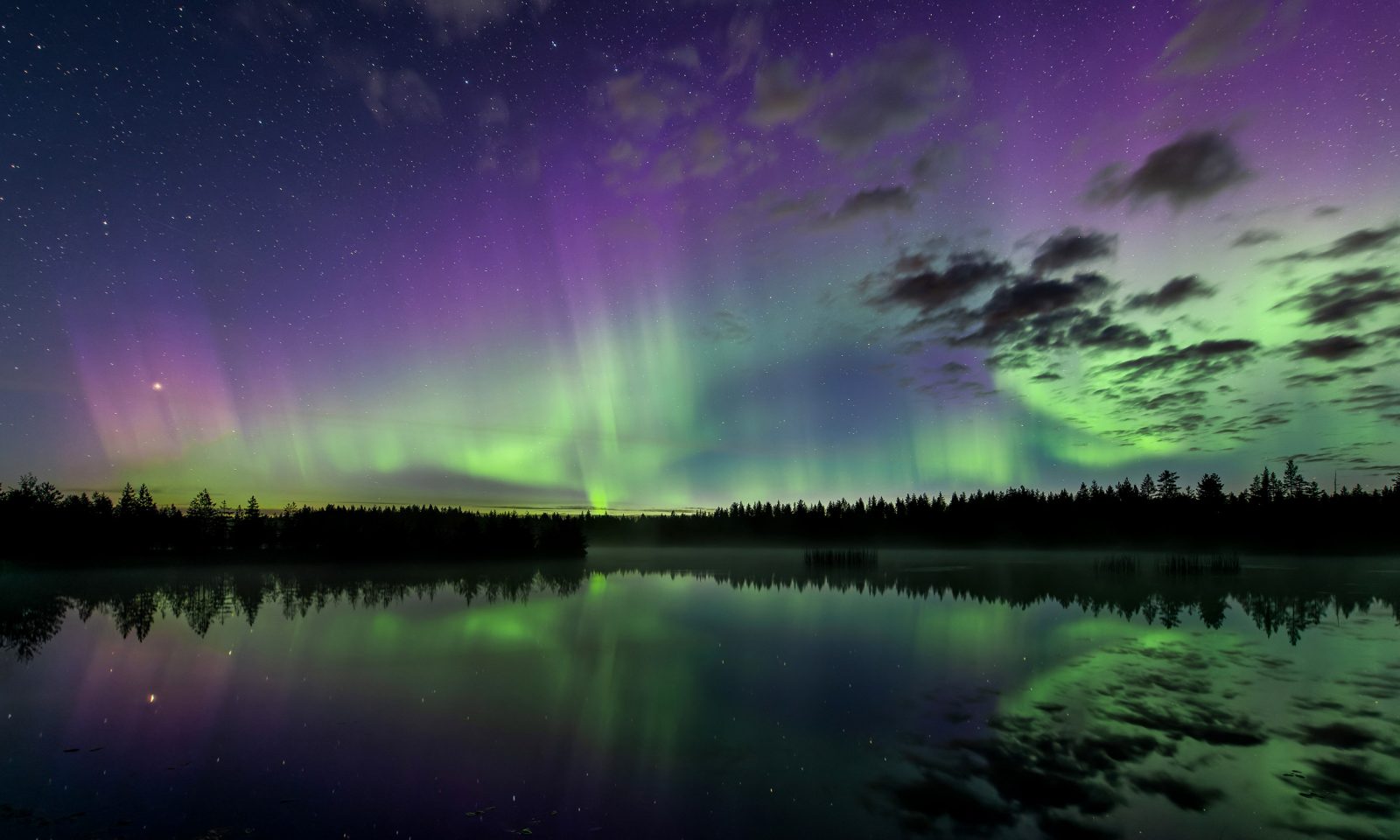Northern lights, or aurora borealis, can be seen in the night sky, also in the Oulu region, from early fall to spring. Even though they are a familiar sight here, many people have a lot of questions about them. The dancing lights do not appear every night or at the same time. Also, their colors, location and intensity vary widely. Why and where do northern lights come from?
The journey of northern lights begins on the surface of the sun. The sun’s surface continually launches plasma, i.e. charged particles, into surrounding space. If the flow of particles is intense and directed towards the Earth, it is possible that we see northern lights.
Before the particles reach our atmosphere, they run into the Earth’s magnetic field which protects us from radiation from space. The magnetic field directs the particles into the atmosphere towards the areas surrounding the Earth’s poles.

The Sun is the source of northern lights. Photo: Thomas Kast
In the atmosphere, the charged particles collide with oxygen and hydrogen. Simultaneously, the charge shifts, and – after some time – the excess energy is released as light, creating northern lights.
Can northern lights be seen on the moon? No, since the moon does not have an atmosphere with which the sun’s particles would collide.
Learn more about northern lights, their birth, and folk beliefs about them at the Aurora Revelare exhibition opening in Tiima in the fall of 2026.

Photo: Thomas Kast.
Aurora Revelare
The wonderful exhibition opening in the fall of 2026 presents facts and stories about the enchanting dancing color show in the skies.
Read more
Testing video clips in Linz. Photo: Jukka Pitkänen
OPENS 2026 | Experience Space
Aurora Revelare VISIO
Visual experience full of science and stories about northern lights.
Read more
Photo: Thomas Kast.
